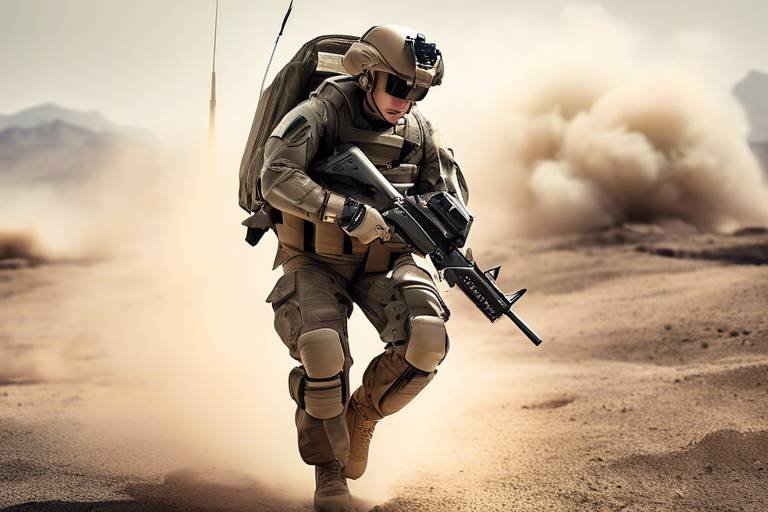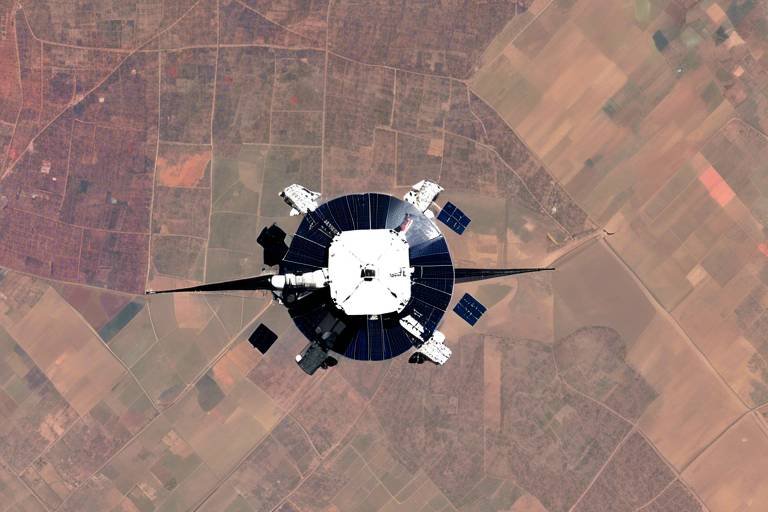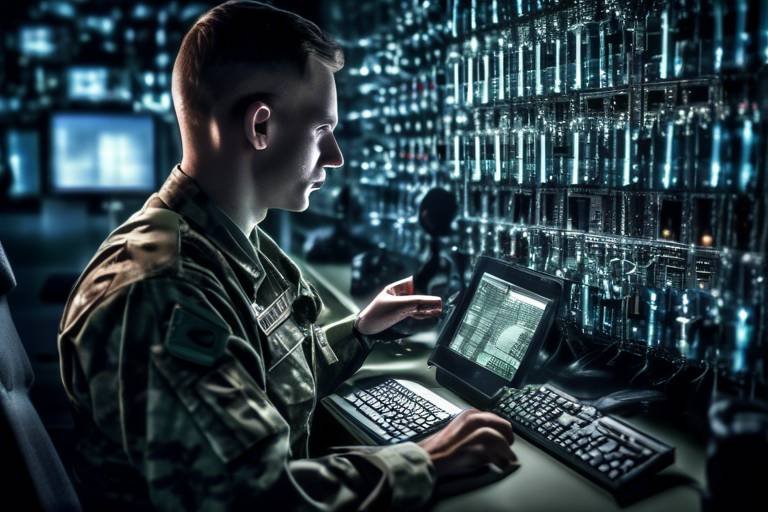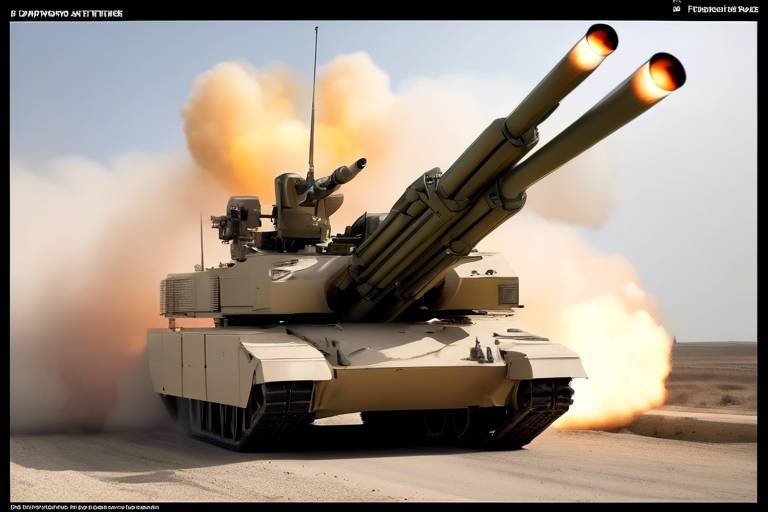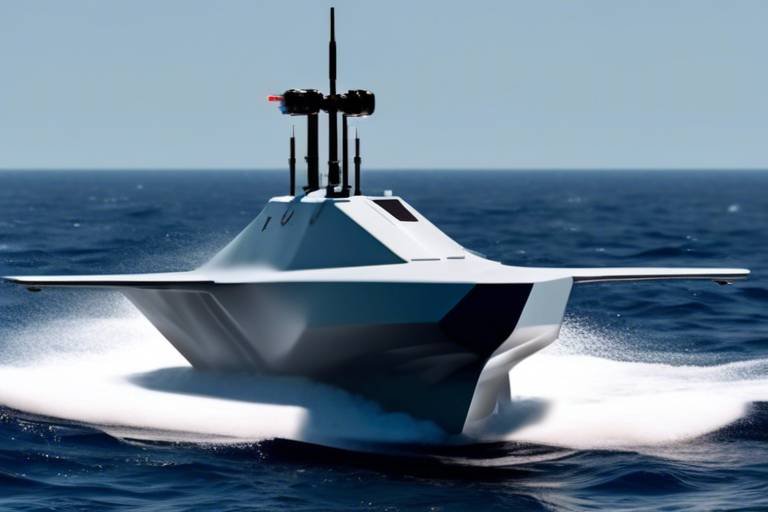How Virtual Reality is Revolutionizing Combat Simulations
Virtual reality (VR) is not just a buzzword in the tech world; it's a game changer, especially in the realm of military training. Imagine stepping into a world where you can experience combat scenarios without the risks associated with real-life warfare. This is the transformative power of VR in combat simulations, and it’s reshaping how military personnel prepare for the challenges they might face on the battlefield. As we delve into this topic, you'll discover how VR enhances training effectiveness, realism, and tactical decision-making, ultimately leading to a more prepared and capable military force.
The journey of combat simulations has been nothing short of remarkable. In the early days, military training was largely conducted through basic exercises that relied on physical drills and theoretical knowledge. Fast forward to today, and we find ourselves immersed in advanced VR environments that offer unparalleled realism and effectiveness. These simulations have evolved from simple role-playing exercises to complex, multi-sensory experiences that can mimic every aspect of combat, from the sounds of gunfire to the chaos of an explosion. This evolution has not only improved the training experience but has also significantly increased the retention of critical skills among soldiers.
So, what makes VR such a powerful tool for combat training? The benefits are numerous and compelling. First and foremost, VR increases engagement. When soldiers don a VR headset, they are transported into a highly interactive world that captures their attention like never before. This immersive experience leads to improved retention of skills, as trainees are more likely to remember what they've practiced in a realistic setting. Moreover, VR allows for the safe simulation of high-stress scenarios. Instead of facing the unpredictability of real combat, soldiers can practice their responses in a controlled environment, refining their skills without the associated risks.
One of the most striking aspects of VR technology is its ability to create environments that are incredibly realistic. Imagine being in a war zone, where you can hear the distant rumble of tanks, feel the vibrations of gunfire, and see the chaos unfold around you. This level of immersion allows trainees to experience realistic sights, sounds, and interactions, making their training sessions not only more engaging but also more effective. The psychological impact of training in such environments can help soldiers prepare for the mental challenges they will face in real combat situations.
Another remarkable feature of VR is its capacity to simulate a variety of terrains and weather conditions. Whether it's a desert landscape, a dense forest, or an urban battlefield, VR can replicate these environments with astonishing accuracy. This diversity provides soldiers with the opportunity to train in different operational settings, preparing them for any situation they may encounter. For instance, a soldier might practice navigating through a simulated city under heavy rain, allowing them to develop the skills necessary to operate effectively regardless of the conditions.
Real-time feedback is another game-changing aspect of VR training. Advanced VR systems can track a trainee's performance and provide immediate analytics on their actions. This instant feedback loop enables soldiers to learn from their mistakes and adjust their strategies on the fly. Imagine a soldier in a VR simulation who makes a tactical error; instead of waiting for a debriefing, they can receive guidance and make corrections in real-time. This level of immediate learning is invaluable in fast-paced combat scenarios.
Beyond the training benefits, VR also offers significant financial advantages. Traditional training methods often require extensive physical resources, including weapons, vehicles, and dedicated training areas. With VR, many of these costs can be reduced or eliminated. Training can be conducted in a virtual environment where multiple personnel can participate simultaneously, enhancing the efficiency of training programs. This cost-effectiveness is particularly appealing to military organizations that need to maximize their budgets while ensuring their personnel receive top-notch training.
While the advantages of VR in combat training are clear, it's essential to address some of the challenges and limitations that come with its adoption. For one, the initial costs of VR equipment can be high, which may deter some military organizations from making the leap. Additionally, technical limitations, such as hardware reliability and software updates, pose challenges that need to be managed effectively. Furthermore, there is often resistance to change within organizations, as trainers and personnel may be skeptical about integrating VR into traditional training programs.
Technical challenges are a significant hurdle in the implementation of VR training. Hardware and software must be reliable and up-to-date to provide effective training experiences. Constant maintenance and updates can be resource-intensive, and any downtime can disrupt training schedules. Ensuring that all trainees have access to functioning equipment is crucial for the success of VR programs.
Another obstacle is overcoming the cultural and institutional resistance to change. Integrating VR into established training programs can be met with skepticism from trainers who are accustomed to traditional methods. Addressing these concerns and demonstrating the effectiveness of VR training is essential for fostering acceptance and enthusiasm among military personnel.
Looking ahead, the future of VR in military training is bright and full of potential. As technology continues to advance, we can expect even more sophisticated VR environments that incorporate artificial intelligence (AI) and enhanced interactivity. Imagine a training scenario where AI-driven characters adapt to a soldier's actions, creating a dynamic and unpredictable training experience. This level of interactivity will further revolutionize combat simulations, making them more effective and engaging than ever before.
- What is virtual reality in combat training?
Virtual reality in combat training refers to the use of immersive technology to simulate real-world combat scenarios for military personnel, enhancing their training experience.
- How does VR improve training effectiveness?
VR improves training effectiveness by providing realistic environments, increasing engagement, and allowing for safe practice of high-stress scenarios.
- What are the challenges of implementing VR in military training?
Challenges include high initial costs, technical reliability issues, and resistance to change from traditional training methods.
- What does the future hold for VR in military training?
The future of VR in military training looks promising with advancements in AI integration and more interactive training scenarios.
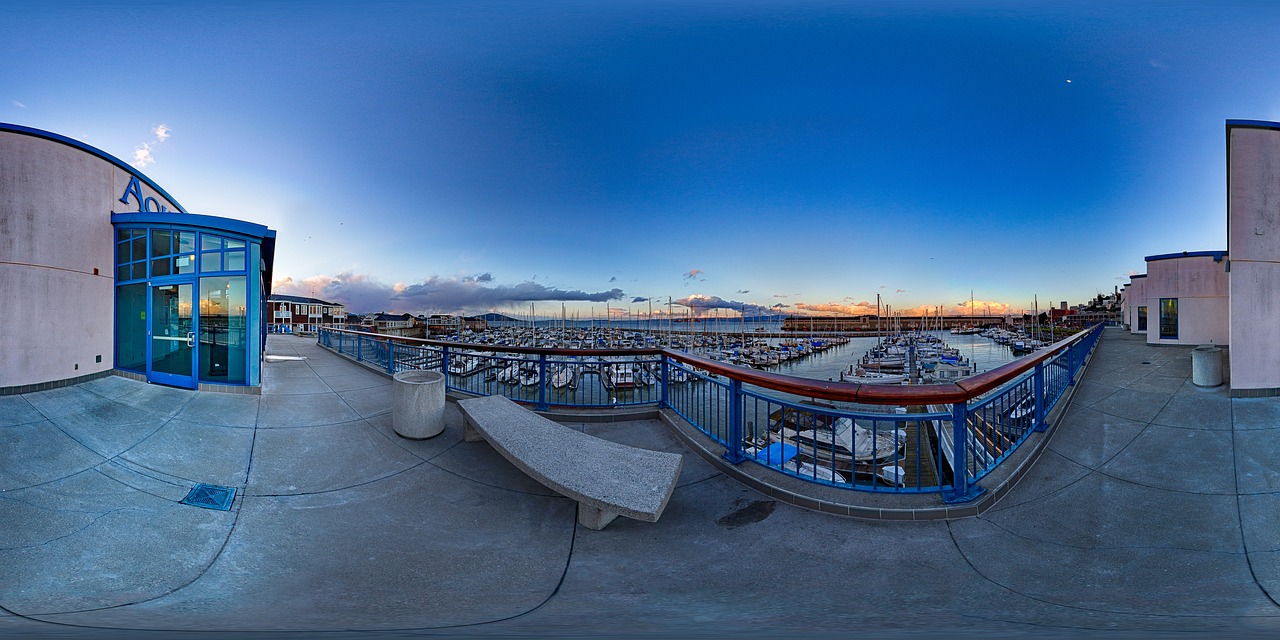
The Evolution of Combat Simulations
The journey of combat simulations is nothing short of fascinating, evolving from rudimentary training exercises to the sophisticated virtual environments we see today. Initially, military training relied heavily on physical drills and live exercises, which, while effective, often posed risks and limitations. These early methods could be compared to learning to ride a bike by only practicing on a stationary trainer—necessary, but lacking the thrill and unpredictability of real-world riding.
As technology advanced, so did the methods of training. The introduction of computer-based simulations marked a significant turning point. These systems allowed for a more controlled environment where soldiers could engage in tactical scenarios without the dangers associated with live fire exercises. Imagine being able to practice complex maneuvers in a safe, repeatable setting; this was the beginning of a new era in military training.
Fast forward to the present day, and we find ourselves in the age of Virtual Reality (VR). This technology has taken combat simulations to an entirely new level. Today’s VR systems can immerse trainees in lifelike environments that replicate the chaos and complexity of actual combat. With the ability to simulate a multitude of scenarios—from urban warfare to jungle operations—VR provides soldiers with an unparalleled training experience. The realism of these simulations is akin to stepping into a video game where the stakes are incredibly high, and the lessons learned can mean the difference between life and death.
Here’s a brief overview of the key milestones in the evolution of combat simulations:
| Time Period | Development | Description |
|---|---|---|
| Pre-1980s | Basic Training Exercises | Relying on physical drills and live exercises. |
| 1980s | Computer-Based Simulations | Introduction of computer-generated environments for tactical training. |
| 2000s | Advanced Simulation Systems | Integration of complex algorithms for realistic war scenarios. |
| Present | Virtual Reality Training | Immersive environments that replicate real-world combat situations. |
As we reflect on this evolution, it’s clear that each stage has contributed to making military training more effective and safer. The transition from physical drills to virtual environments represents not just a technological advancement, but a fundamental shift in how we prepare our soldiers for the challenges they will face in the field. With each leap forward, the ability to train effectively and efficiently has improved, ensuring that our military personnel are better equipped to handle the complexities of modern warfare.
- What are the main advantages of VR in combat training? VR enhances realism, allows for safe simulations of high-stress scenarios, and provides immediate feedback to trainees.
- How has technology changed the landscape of military training? Technology has transformed training from basic drills to immersive experiences that better prepare soldiers for real-world situations.
- What challenges does VR face in military applications? Challenges include high equipment costs, technical issues, and resistance to change within traditional training programs.

Benefits of Virtual Reality in Training
Virtual Reality (VR) has emerged as a game-changer in the realm of military training, offering a plethora of benefits that traditional methods simply can't match. Imagine stepping into a world where you can engage in realistic combat scenarios without the risks associated with live training exercises. That's the power of VR! It not only captivates the trainees but also enhances their learning experience significantly. One of the most compelling advantages of VR is the increased engagement it fosters. Trainees are often more motivated and attentive when immersed in a virtual environment, where they can interact with their surroundings in real-time.
Furthermore, VR training leads to improved retention of skills. Studies have shown that individuals who undergo training in immersive environments tend to remember what they've learned far better than those who trained through conventional methods. This is largely due to the multi-sensory experience that VR provides, engaging sight, sound, and even touch, which helps solidify the learning process. For instance, when a soldier practices a tactical maneuver in a VR simulation, they are not just watching a video; they are actively participating, making decisions, and experiencing the consequences of their actions.
Another significant advantage of VR is its ability to simulate high-stress scenarios safely. In real-life combat situations, stress can impair decision-making and performance. VR allows trainees to experience stressful environments without the actual danger, enabling them to develop coping strategies and improve their performance under pressure. Imagine a soldier facing a simulated ambush; they can practice their response repeatedly, refining their skills without the fear of real-world repercussions.
Moreover, VR training can be tailored to meet specific needs. It can simulate various combat scenarios, from urban warfare to open-field engagements, allowing for a wide range of training experiences. This adaptability is crucial, as soldiers often face diverse operational environments. For example, a soldier could train in a virtual desert one day and a snowy landscape the next, preparing them for any situation they might encounter.
One of the standout features of VR technology is its capacity to create highly immersive environments. This level of realism is vital for effective training. Trainees can experience realistic sights, sounds, and interactions, which are crucial for preparing them for actual combat situations. The use of advanced graphics and sound design in VR simulations can make a trainee feel as though they are truly in the midst of a battlefield. This immersion not only enhances learning but also builds confidence, as soldiers feel more prepared for the real thing.
VR's ability to replicate various terrains and weather conditions is another noteworthy benefit. Soldiers can train in environments that mimic the exact conditions they might face in the field. Whether it’s navigating through a dense forest, traversing a rocky mountain, or conducting operations in a bustling urban area, VR can provide the necessary experience. This exposure is critical for developing the skills and adaptability needed in real-world situations.
Furthermore, VR systems are designed to offer immediate feedback and performance analytics. This feature enables trainees to learn from their actions and make necessary adjustments on the fly. For instance, after completing a simulation, a soldier might receive a detailed report on their decision-making process, highlighting areas for improvement. This immediate feedback loop is invaluable for skill development, making it possible to refine techniques and strategies efficiently.
In conclusion, the benefits of VR in combat training are numerous and profound. From increased engagement and skill retention to the ability to simulate high-stress scenarios and diverse environments, VR is undoubtedly revolutionizing military training. As technology continues to evolve, we can expect even more innovative applications that will further enhance the training experience for our soldiers.
- What is Virtual Reality (VR) training?
VR training uses immersive technology to simulate real-world scenarios, allowing trainees to practice skills in a controlled environment. - How does VR improve skill retention?
The multi-sensory experience of VR engages various senses, helping to reinforce learning and improve memory retention. - Can VR simulate different combat environments?
Yes, VR can replicate a wide range of terrains and weather conditions, providing soldiers with diverse training experiences. - What kind of feedback do trainees receive from VR training?
Trainees receive real-time feedback and performance analytics, helping them to identify strengths and areas for improvement.
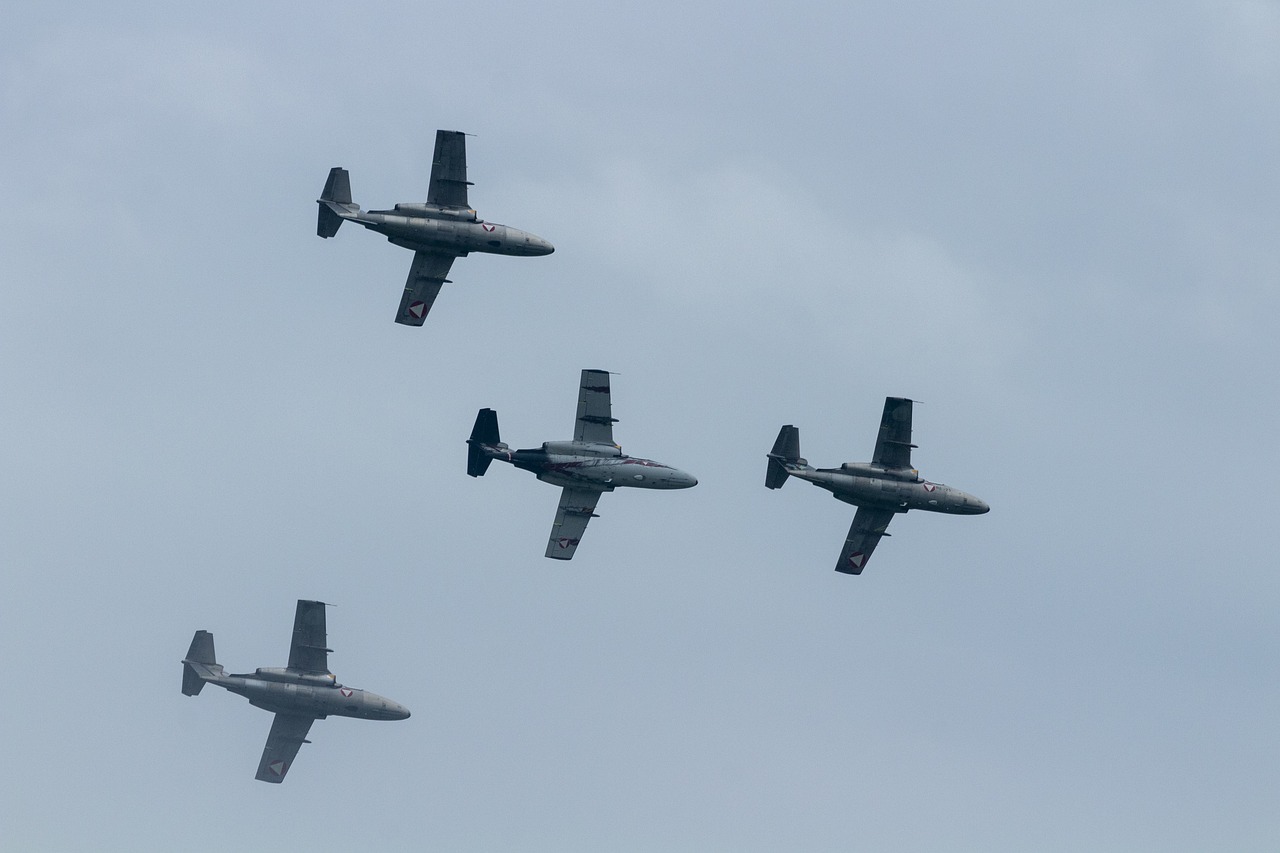
Enhancing Realism and Immersion
When it comes to combat training, realism and immersion are not just buzzwords; they are essential components that can make or break a training experience. Imagine stepping into a world where the sounds of gunfire echo in your ears, the smell of gunpowder fills the air, and the sights of a battlefield surround you. This is the power of Virtual Reality (VR) technology, which has taken combat simulations to unprecedented levels of realism. By engaging multiple senses, VR allows trainees to fully immerse themselves in scenarios that closely mimic real-life combat situations.
One of the standout features of VR is its ability to create highly detailed environments. With advancements in graphics and sound design, modern VR simulations can replicate the chaos of a battlefield with striking accuracy. This includes everything from the visual details of soldiers and equipment to the auditory cues of distant explosions and close-range firefights. Such immersive experiences not only enhance the training process but also help soldiers develop the mental fortitude needed for actual combat.
The effectiveness of VR in enhancing realism is further amplified by the incorporation of interactive elements. Trainees can engage with their environment in real-time, making decisions that affect the outcome of the simulation. For instance, they might need to take cover behind a virtual wall or communicate with squad members using realistic hand signals. This level of interactivity fosters a sense of agency and responsibility, which is crucial for developing tactical decision-making skills.
Moreover, VR can simulate diverse environments that soldiers may encounter in the field. From urban landscapes to rugged terrains, the technology can replicate various operational settings. This means that trainees can experience scenarios in deserts, jungles, and urban warfare, all within a controlled setting. Such exposure is invaluable, as it prepares soldiers for the unpredictability of real combat situations.
In addition to environmental diversity, VR also allows for the simulation of extreme weather conditions. Whether it’s a torrential downpour, a blinding snowstorm, or the sweltering heat of summer, VR can create these scenarios, giving trainees the opportunity to adapt their strategies accordingly. This adaptability is essential, as real-world conditions can change rapidly and unexpectedly during combat.
To further enhance the training experience, many VR systems incorporate real-time feedback and analytics. After completing a simulation, trainees can receive immediate insights into their performance, highlighting areas for improvement. This feedback loop is crucial for skill retention and helps reinforce learning in a way that traditional training methods often cannot.
In summary, the integration of VR technology into combat simulations has revolutionized the way military personnel are trained. By enhancing realism and immersion, VR not only prepares soldiers for the challenges they will face but also instills confidence and competence that can be critical in high-stress situations. As the technology continues to evolve, the potential for even greater levels of realism and engagement is limitless.
- How does VR training compare to traditional training methods? VR training offers a more immersive experience, allowing for realistic simulations that can enhance learning and retention compared to traditional methods.
- What types of scenarios can be simulated using VR? VR can simulate a wide range of scenarios, including urban warfare, desert operations, and extreme weather conditions, providing soldiers with diverse training experiences.
- Is VR training cost-effective? Yes, while initial setup costs can be high, VR training can reduce long-term expenses related to physical training resources and allow for training more personnel simultaneously.
- What feedback can trainees expect from VR training? Trainees can receive real-time performance analytics that help them understand their strengths and weaknesses, allowing for targeted improvement.

Simulating Diverse Environments
The ability to simulate diverse environments is one of the most groundbreaking features of virtual reality (VR) in combat training. Imagine a soldier preparing for deployment; they must be ready to face a multitude of terrains and weather conditions. With traditional training methods, replicating these scenarios can be both time-consuming and costly. However, VR technology allows for the creation of various realistic settings, from arid deserts to dense forests, and even urban landscapes. This flexibility not only enhances training effectiveness but also prepares soldiers for the unpredictability of real-world missions.
By immersing trainees in a variety of environments, VR helps them develop crucial skills that are essential for operational success. For instance, soldiers can practice navigating through mountainous terrains, which require different tactics compared to flat landscapes. Additionally, they can experience how weather conditions, such as rain or fog, impact visibility and strategy. This level of immersion ensures that trainees are not just familiar with the mechanics of their equipment but are also adept at adapting their tactics to suit the environment.
Furthermore, VR simulations can be tailored to reflect specific operational scenarios that soldiers might encounter. For example, a training session could be designed to mimic a night operation in an urban area, complete with the sounds of distant gunfire and the visuals of city lights. This kind of realistic training can be crucial for building confidence and familiarity with the environment, ultimately leading to improved performance in the field.
Moreover, the use of VR in simulating diverse environments opens up opportunities for collaborative training exercises. Soldiers from different units or even allied forces can engage in joint missions within the same virtual space, enhancing teamwork and communication skills. This collaborative aspect not only fosters camaraderie but also prepares soldiers for the realities of working alongside international partners in actual combat situations.
In summary, the capacity to simulate diverse environments through VR technology is revolutionizing combat training. It provides soldiers with the necessary experience to navigate various challenges they may face during deployments, ensuring they are well-prepared for anything that comes their way. With continuous advancements in VR, the future of military training looks promising, offering even more realistic and effective training solutions.
- What types of environments can be simulated using VR? VR can simulate a wide range of environments including deserts, forests, urban settings, and even extreme weather conditions.
- How does VR training differ from traditional training methods? VR training provides a more immersive experience, allowing soldiers to practice in realistic scenarios without the logistical challenges of physical setups.
- Can VR simulations be customized for specific missions? Yes, VR simulations can be tailored to reflect specific operational scenarios, enhancing the relevance and effectiveness of the training.
- Is VR training cost-effective? While there may be initial costs for equipment, VR training can ultimately reduce expenses related to physical training resources and allow for more personnel to be trained simultaneously.

Real-Time Feedback and Analytics
One of the most groundbreaking features of virtual reality (VR) in combat training is its ability to provide . Imagine being in a high-stakes situation where every decision counts, and suddenly, you receive instant insights on your performance. This is not just a dream; it’s the reality that VR technology brings to the table. In traditional training environments, feedback often comes after the fact, leaving trainees to wonder how they could have improved their actions. With VR, however, the learning process becomes dynamic and interactive.
When trainees engage in VR combat simulations, they are immersed in an environment that accurately reflects the pressures of real combat. As they navigate through different scenarios, they receive immediate data on various aspects of their performance. For instance, metrics such as reaction time, decision-making speed, and accuracy can be tracked and analyzed in real-time. This level of detail is invaluable as it allows soldiers to understand their strengths and weaknesses on the spot.
Moreover, the analytics gathered during these training sessions can be compiled into comprehensive reports. These reports can highlight trends over time and identify areas that require further development. For example, if a soldier consistently struggles with situational awareness, the training program can be adjusted to focus on enhancing that skill through targeted scenarios. This tailored approach not only maximizes training efficiency but also ensures that each trainee receives the support they need to excel.
To illustrate the effectiveness of real-time feedback, consider the following table that outlines key performance indicators (KPIs) that VR systems can measure:
| Performance Metric | Description | Importance |
|---|---|---|
| Reaction Time | Time taken to respond to stimuli | Critical for quick decision-making in combat |
| Accuracy | Precision of actions or shots taken | Essential for effective engagement of targets |
| Situational Awareness | Understanding of the surrounding environment | Key for tactical decision-making |
| Stress Management | Ability to maintain composure under pressure | Vital for performance in high-stress scenarios |
Additionally, the real-time feedback mechanism fosters a culture of continuous improvement. Instead of waiting for a debriefing session, trainees can adjust their strategies and techniques as they progress through the simulation. This immediacy not only enhances learning but also builds confidence, as soldiers can see their improvement in real-time. It’s like having a personal coach right there in the training room, guiding them through each step and helping them refine their skills.
In conclusion, the integration of real-time feedback and analytics in VR combat training is not just a technological advancement; it's a revolutionary shift in how military training is approached. By providing immediate insights and fostering a responsive learning environment, VR is setting the stage for a new generation of soldiers who are better prepared for the complexities of modern warfare.
- What is real-time feedback in VR training? Real-time feedback refers to the immediate insights and data provided to trainees during their VR simulations, allowing them to adjust their performance on the spot.
- How does VR enhance training effectiveness? VR enhances training effectiveness by creating immersive environments that simulate real-world scenarios, coupled with immediate feedback that helps trainees learn and improve quickly.
- What types of analytics can be gathered from VR training? Analytics can include metrics like reaction time, accuracy, situational awareness, and stress management, which are crucial for evaluating a trainee's performance.
- Can VR training replace traditional methods? While VR training offers significant advantages, it is best used as a complement to traditional methods rather than a complete replacement, providing a holistic approach to military training.

Cost-Effectiveness of VR Training
When it comes to military training, the financial implications are always a hot topic. Traditional training methods can be incredibly resource-intensive, often requiring extensive physical materials, personnel, and time. However, with the advent of Virtual Reality (VR), there's a transformative shift happening in how we think about training costs. Imagine a world where soldiers can train in a simulated environment without the need for real-world ammunition, vehicles, or extensive logistics. This is not just a dream; it's the reality that VR is bringing into focus.
One of the most significant advantages of VR training is its ability to reduce costs associated with traditional training methods. For instance, the expenses linked to maintaining equipment, facilities, and live training exercises can quickly add up. With VR, these costs can be minimized. A study highlighted that organizations could save as much as 30-50% on training expenditures by shifting to VR solutions. This is largely because VR eliminates the need for physical resources and allows for training to occur anywhere, anytime.
Moreover, VR training enables a higher throughput of trainees. Instead of waiting for slots in physical training exercises, multiple soldiers can engage in VR simulations simultaneously. This means that a larger number of personnel can be trained in a shorter period, effectively maximizing the use of available resources. For example, a single VR training module can accommodate dozens of trainees at once, which is a significant improvement over traditional methods where only a handful can participate at any given time.
Additionally, the flexibility of VR training environments allows for rapid updates and modifications to training scenarios. Instead of waiting for weeks or months to set up a new physical training exercise, VR can provide instant updates to reflect current combat scenarios or tactics. This agility not only saves time but also ensures that soldiers are always training with the most relevant and up-to-date information.
To further illustrate the cost-effectiveness of VR training, consider the following table that compares traditional training costs with VR training costs:
| Training Method | Estimated Cost per Trainee | Time Required |
|---|---|---|
| Traditional Training | $2,000 | 4 weeks |
| VR Training | $1,000 | 1 week |
As you can see, the cost per trainee is significantly lower with VR training, and the time required is drastically reduced. This not only leads to direct financial savings but also allows military organizations to be more agile and responsive to training needs.
In conclusion, the cost-effectiveness of VR training cannot be overstated. It provides a modern, efficient, and economical alternative to traditional methods, allowing military personnel to train more effectively without breaking the bank. As VR technology continues to advance and become more accessible, its adoption in military training is likely to skyrocket, ultimately transforming how we prepare our forces for real-world challenges.
- What are the main benefits of VR training for military personnel?
VR training offers enhanced realism, cost savings, and the ability to simulate various combat scenarios without the risks associated with live training. - Is VR training suitable for all types of military exercises?
While VR training is highly effective for many scenarios, it may not replace all forms of training, especially those requiring physical interaction or specific equipment. - How does VR training improve skill retention?
VR training engages trainees in immersive environments that enhance focus and retention, making it easier to remember skills learned during simulations.

Challenges and Limitations of VR in Combat Training
While the benefits of virtual reality (VR) in combat training are compelling, it's crucial to acknowledge that there are challenges and limitations that come with integrating this technology into military programs. One of the most significant hurdles is the cost associated with acquiring and maintaining VR equipment. High-quality VR systems can be expensive, not only in terms of initial investment but also for ongoing maintenance and updates. This can pose a challenge for military budgets, which often have to balance multiple priorities.
Moreover, the technical challenges of VR cannot be overlooked. Hardware and software need to be constantly updated to ensure that they remain effective and relevant. This requires a dedicated IT support team and can lead to downtime that interrupts training schedules. Trainees may find themselves facing glitches or malfunctions, which can be frustrating and counterproductive. The need for reliable technology is paramount, as any technical failure during a training session can undermine the entire experience.
Another critical aspect to consider is the cultural resistance to adopting new technologies. Many military personnel and trainers may be accustomed to traditional training methods, which can create skepticism about the effectiveness of VR. This resistance can stem from a variety of factors, including a lack of understanding of the technology or concerns about its reliability. Overcoming this cultural barrier requires not only education about the benefits of VR but also demonstration of its effectiveness in improving training outcomes.
Additionally, there is a need for specialized training for instructors who will be using VR systems. While the technology may be intuitive for some, it requires a certain level of expertise to operate effectively. Instructors must be well-versed in both the technical aspects of VR and the pedagogical strategies for teaching in a virtual environment. This can lead to an increased demand for training programs that prepare instructors to use VR effectively, which can add to the overall cost and complexity of implementation.
In summary, while the potential of VR in combat training is immense, it is accompanied by significant challenges that must be addressed. From financial constraints to technical issues and cultural resistance, these limitations can hinder the effective integration of VR into military training programs. However, with careful planning and investment, these obstacles can be overcome, paving the way for a more immersive and effective training experience.
- What are the main challenges of implementing VR in combat training?
The main challenges include high costs, technical reliability issues, cultural resistance to change, and the need for specialized instructor training. - How can military organizations overcome resistance to VR technology?
Education and demonstration of VR's effectiveness in improving training outcomes can help mitigate skepticism among personnel. - Is VR training as effective as traditional training methods?
Research suggests that VR can enhance engagement and retention of skills, often making it more effective in certain scenarios. - What future advancements can we expect in VR technology for military training?
Future advancements may include better AI integration, enhanced interactivity, and more realistic simulations that can further revolutionize combat training.
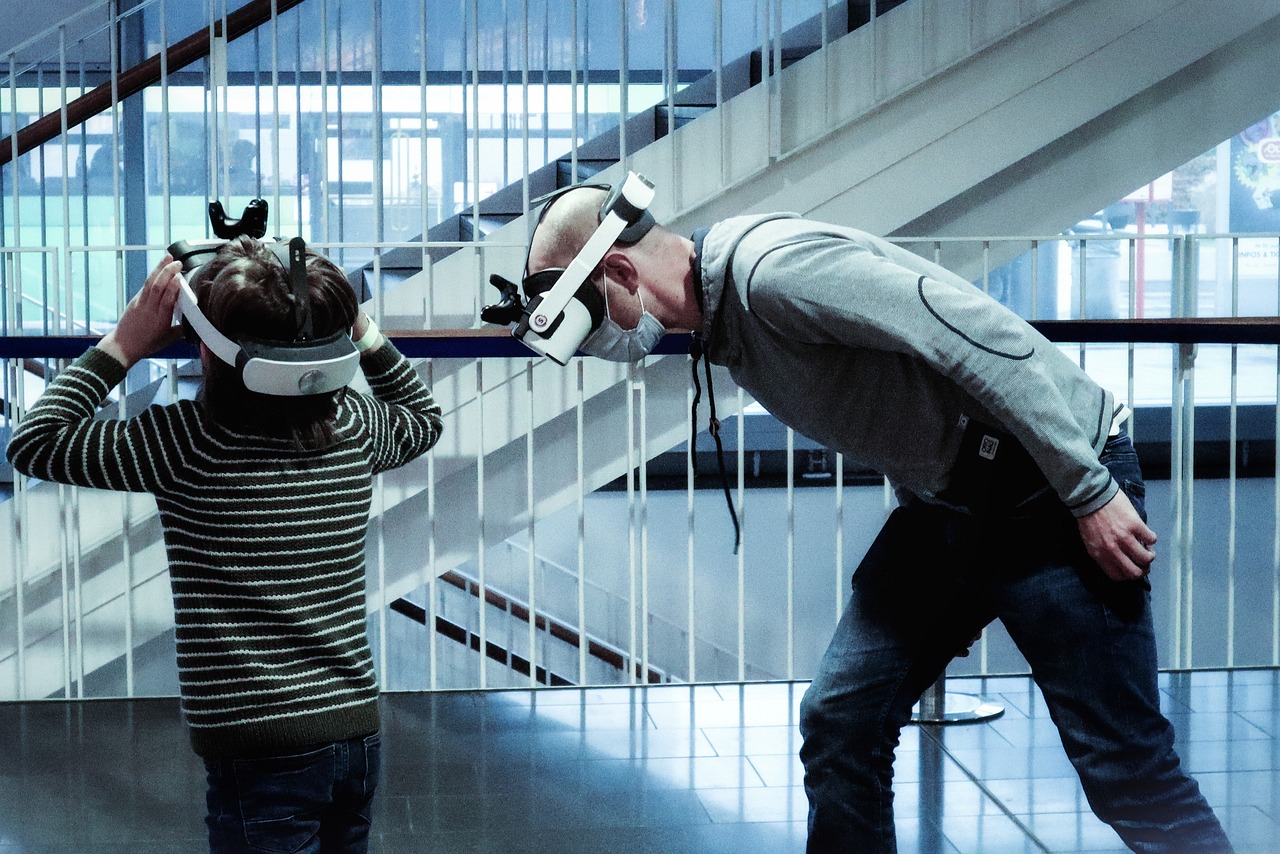
Technical Challenges
While the integration of virtual reality (VR) into combat training offers remarkable advantages, it is not without its . These hurdles can sometimes be daunting, and understanding them is crucial for military organizations aiming to embrace this cutting-edge technology. One of the primary concerns revolves around hardware reliability. VR systems require robust hardware to function effectively, and any malfunction can disrupt training sessions. Imagine a soldier in the midst of a critical simulation, only to have their headset freeze or their motion sensors fail. Such technical glitches can not only hinder training but also lead to frustration and disengagement among trainees.
Moreover, the software that powers VR simulations must be continuously updated to incorporate the latest military tactics and technologies. This need for constant updates can strain resources and requires a dedicated team to ensure that the training environment remains relevant and effective. Just like a video game that receives patches and updates, military VR systems need the same level of attention to detail. Failure to maintain software can result in outdated scenarios that do not reflect current combat situations, ultimately compromising the training experience.
Another significant challenge is the requirement for specialized training for instructors. While VR technology is user-friendly for trainees, instructors need to be well-versed in the operational aspects of the system. This training is essential to facilitate smooth sessions and maximize the benefits of VR. Imagine trying to teach a class without fully understanding the tools at your disposal; it can lead to confusion and ineffective training. Thus, investing in instructor training is just as critical as the technology itself.
Additionally, there are concerns regarding the cost of equipment. High-quality VR headsets, motion tracking systems, and the necessary computing power can represent a significant financial investment. Many military organizations operate under tight budgets, making it essential to weigh the costs against the potential benefits of VR training. However, it’s important to consider that while the initial outlay may be steep, the long-term savings in training resources and improved soldier performance can justify the expense.
Furthermore, the integration of VR into existing training programs may face cultural resistance. Some personnel may be skeptical about the effectiveness of VR compared to traditional training methods. This skepticism can stem from a lack of familiarity with technology or a belief that nothing can replace hands-on experience. Overcoming this resistance requires a thoughtful approach, including demonstrations of the technology's effectiveness and highlighting success stories from other military organizations that have embraced VR training.
In summary, while the technical challenges of implementing VR in combat training are significant, they are not insurmountable. By addressing hardware reliability, ensuring software updates, training instructors adequately, managing costs, and overcoming cultural resistance, military organizations can harness the full potential of virtual reality. The journey may be fraught with obstacles, but the rewards—enhanced training experiences and better-prepared soldiers—make it a worthy endeavor.
- What are the main technical challenges of VR in combat training?
The main challenges include hardware reliability, software maintenance, the need for specialized instructor training, equipment costs, and cultural resistance to new technology.
- How can military organizations overcome these challenges?
By investing in reliable hardware, ensuring regular software updates, providing comprehensive training for instructors, managing budget constraints wisely, and fostering an open mindset towards technology integration.
- Is VR training more effective than traditional training methods?
Many studies suggest that VR training can enhance engagement and retention of skills, providing a safe environment to simulate high-stress scenarios, which can be more effective than traditional methods.

Overcoming Resistance to Change
When it comes to integrating Virtual Reality (VR) into military training programs, one of the most significant hurdles is the resistance to change. This resistance often stems from a deep-rooted reliance on traditional training methods that have been in place for decades. Imagine trying to convince a seasoned soldier who has trained with live ammunition and physical drills for years that a headset and a virtual environment can provide a more effective training experience. It’s not just about the technology; it’s about shifting mindsets and breaking through the comfort zones that many trainers and personnel have established.
One of the primary reasons for this resistance is the inherent skepticism regarding new technologies. Many trainers may question the effectiveness of VR compared to traditional methods. They might think, “How can a digital simulation replicate the chaos and unpredictability of actual combat?” This skepticism is valid, but it often overlooks the advancements in VR that create immersive and realistic training environments. To address these concerns, it is crucial to provide comprehensive demonstrations and pilot programs that showcase the effectiveness of VR training.
Additionally, the cultural dynamics within military institutions can pose challenges. Institutions often have established hierarchies and protocols that can make adopting new methods feel like a daunting task. In these environments, change can be perceived as a threat to tradition and authority. To combat this, it is essential to involve key stakeholders in the decision-making process and demonstrate how VR can complement existing training methods rather than replace them. By fostering a collaborative atmosphere, organizations can ease the transition and encourage buy-in from all levels of personnel.
Furthermore, the need for specialized training for instructors to effectively use VR technology can also create resistance. Some trainers may feel overwhelmed by the prospect of learning new systems and software. To alleviate this concern, organizations should invest in comprehensive training programs that not only equip instructors with the necessary skills but also build their confidence in using VR. This investment in human capital can lead to a more successful implementation of VR in training environments.
Ultimately, overcoming resistance to change requires a multifaceted approach. Here are some strategies that can help:
- Education and Awareness: Provide information on the benefits and effectiveness of VR training through workshops and seminars.
- Pilot Programs: Implement small-scale pilot projects that allow personnel to experience VR training firsthand.
- Involvement of Key Stakeholders: Engage trainers and personnel in discussions about the integration process to gather feedback and foster a sense of ownership.
- Continuous Support: Offer ongoing support and training to ensure that instructors feel comfortable with the technology.
By addressing the concerns and challenges associated with adopting VR technology, military organizations can pave the way for a more effective and engaging training experience. The future of combat simulations is bright with the potential of VR, but it requires a collective effort to embrace this change fully.
Q: What are the main benefits of using VR for military training?
A: VR offers increased engagement, the ability to simulate high-stress scenarios safely, and provides real-time feedback for skill improvement.
Q: How can organizations overcome skepticism towards VR training?
A: By providing education, conducting pilot programs, and involving key stakeholders in the integration process, organizations can build trust in VR technology.
Q: Are there any costs associated with implementing VR training?
A: Yes, there are initial costs for equipment and software, but long-term savings can be achieved through reduced physical training resources and improved training efficiency.
Q: What challenges might arise when adopting VR technology?
A: Challenges can include technical reliability, the need for specialized training for instructors, and cultural resistance within the organization.
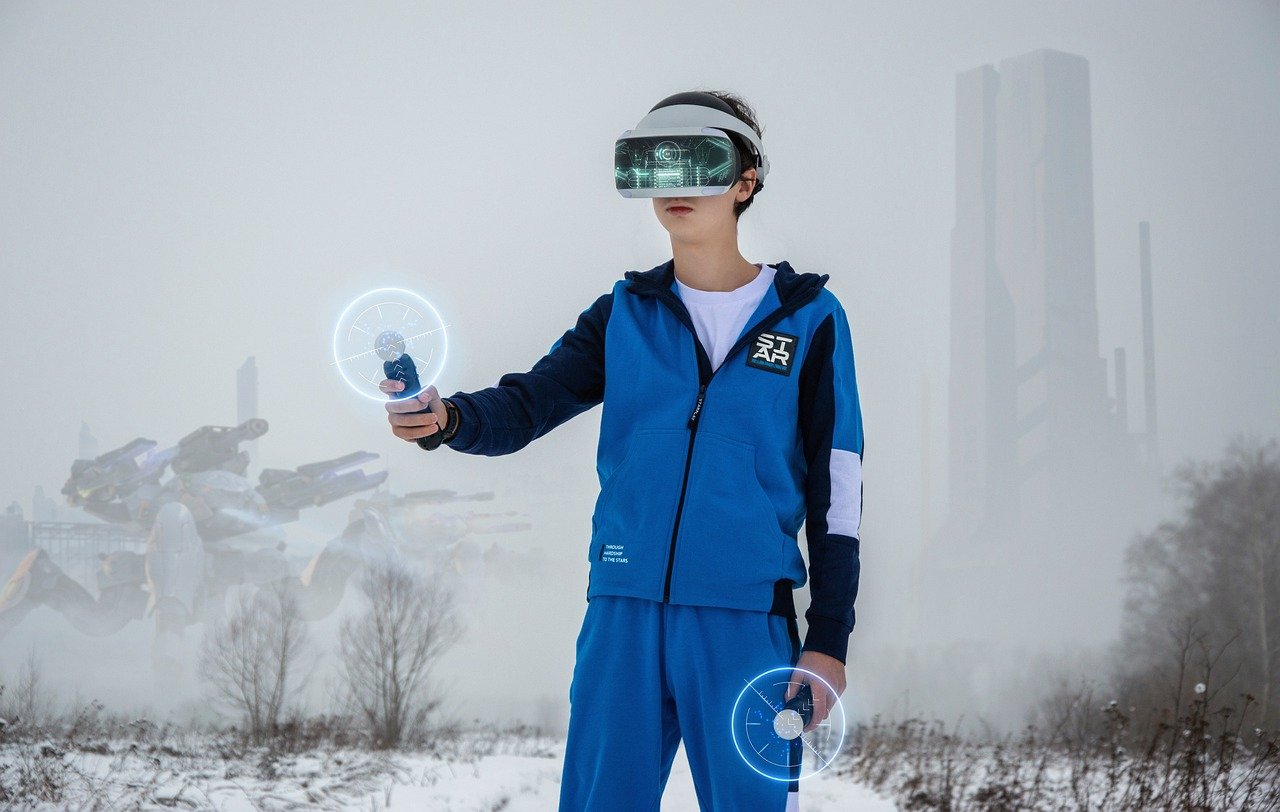
The Future of VR in Military Training
The horizon of military training is rapidly changing, and at the forefront of this evolution is Virtual Reality (VR). As we look to the future, the potential of VR to transform combat simulations is nothing short of astonishing. Imagine a world where soldiers can train in environments that mimic real combat scenarios down to the smallest detail, all within the safety of a virtual space. This is not just a dream; it is becoming a reality.
One of the most exciting prospects for the future of VR in military training is the integration of Artificial Intelligence (AI). AI can enhance the training experience by creating dynamic scenarios that adapt to the trainee's performance. Instead of following a set script, AI-driven simulations can change in real-time, providing a unique challenge every time a soldier steps into the virtual world. This level of interactivity will not only keep training engaging but also ensure that soldiers are prepared for the unpredictable nature of actual combat.
Moreover, the future of VR in military training will likely see advancements in multi-user environments. Imagine a training session where multiple soldiers can collaborate or compete in real-time, regardless of their physical location. This would not only facilitate teamwork but also allow for joint exercises that are crucial for modern military operations. With the right technology, soldiers from different branches or even allied nations could train together, fostering camaraderie and understanding.
Another key area of development is the incorporation of biometric feedback systems. By integrating wearables that monitor heart rate, stress levels, and other physiological responses, trainers can gain valuable insights into how soldiers react under pressure. This data can then be used to tailor training programs to individual needs, ensuring that each soldier is not only physically prepared but also mentally equipped to handle the rigors of combat.
As we envision this future, it is also essential to consider the cost-effectiveness of these advanced VR systems. While the initial investment in high-quality VR technology may be significant, the long-term savings could be substantial. With VR, the need for physical training resources diminishes, and the ability to train more personnel simultaneously can lead to a more efficient allocation of military budgets. Additionally, the reduction in travel costs for training exercises could free up funds for other critical areas.
However, the journey towards a fully integrated VR training program is not without its challenges. As we push forward, it will be crucial to address the technical limitations and ensure that the hardware and software used are reliable and up-to-date. Ongoing maintenance and updates will be necessary to keep pace with technological advancements, ensuring that training remains relevant and effective.
In summary, the future of VR in military training is bright and full of possibilities. With innovations like AI integration, multi-user environments, and biometric feedback systems, we are on the brink of a training revolution that could redefine how soldiers prepare for combat. As we embrace these advancements, the military will not only enhance its training capabilities but also ensure that its personnel are better equipped for the challenges ahead.
- What are the main benefits of using VR in military training?
VR provides immersive training environments, enhances engagement, and allows for safe simulations of high-stress scenarios. - How does AI improve VR training simulations?
AI enables dynamic scenarios that adapt to a trainee's performance, creating unique challenges and enhancing realism. - What challenges does the military face in adopting VR technology?
Challenges include high initial costs, technical reliability, and resistance to change within traditional training programs. - Can VR training be used for joint exercises with allied nations?
Yes, VR can facilitate multi-user environments, allowing soldiers from different nations to train together in real-time.
Frequently Asked Questions
- What is virtual reality (VR) in combat simulations?
Virtual reality (VR) in combat simulations refers to the use of immersive technology to create realistic training environments for military personnel. It allows trainees to engage in simulated combat scenarios that replicate real-world conditions, enhancing their training experience.
- How does VR enhance training for military personnel?
VR enhances training by providing a highly immersive experience that increases engagement and retention of skills. Trainees can practice in a safe environment, simulating high-stress situations without the associated risks of real combat.
- What are the benefits of using VR for combat training?
The benefits of using VR for combat training include increased realism, the ability to simulate diverse environments, real-time feedback, and cost-effectiveness. It allows soldiers to experience various terrains and weather conditions, improving their adaptability and decision-making skills.
- Are there any challenges in implementing VR for combat training?
Yes, there are challenges such as high equipment costs, technical limitations, and the need for specialized training for instructors. Additionally, there can be resistance to change from traditional training methods, which can slow down the adoption of VR technology.
- How does VR provide real-time feedback during training?
VR systems are equipped with analytics tools that track trainee performance and provide immediate feedback. This allows soldiers to learn from their actions in real-time, helping them to improve their skills and strategies effectively.
- What does the future hold for VR in military training?
The future of VR in military training looks promising, with advancements expected in areas such as artificial intelligence integration and enhanced interactivity. These developments will likely lead to even more realistic and effective training experiences for military personnel.





